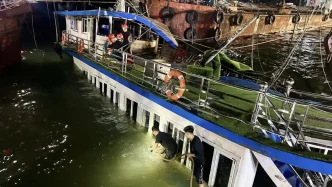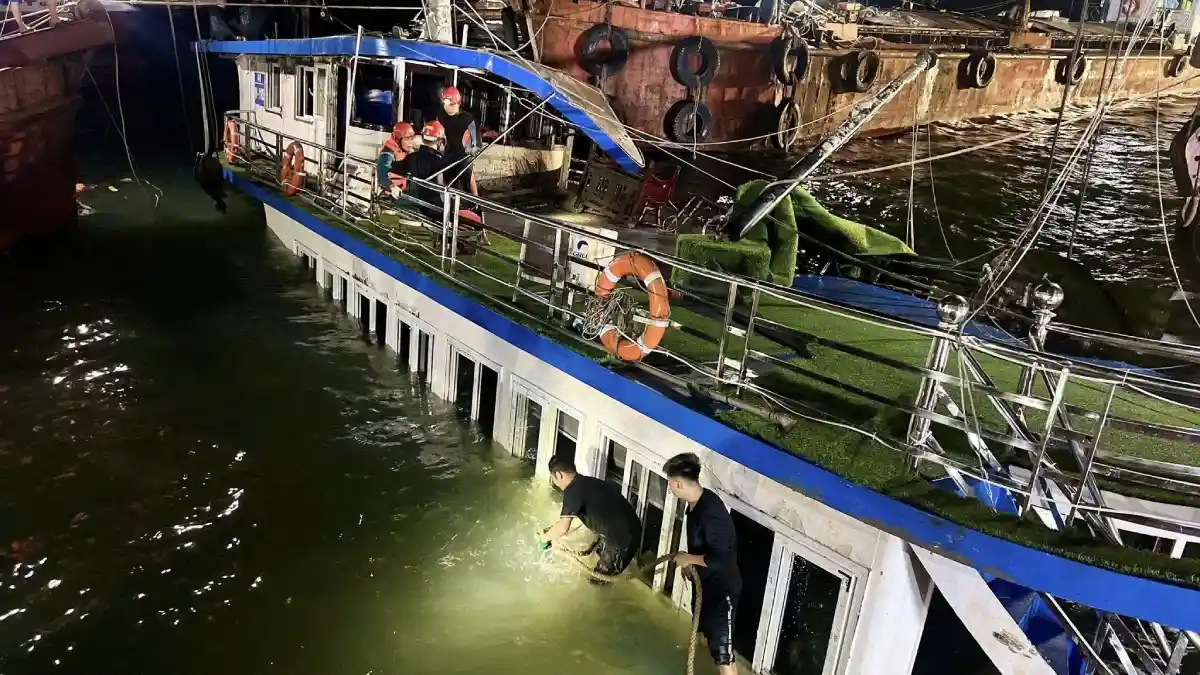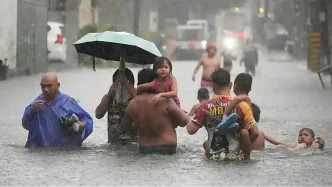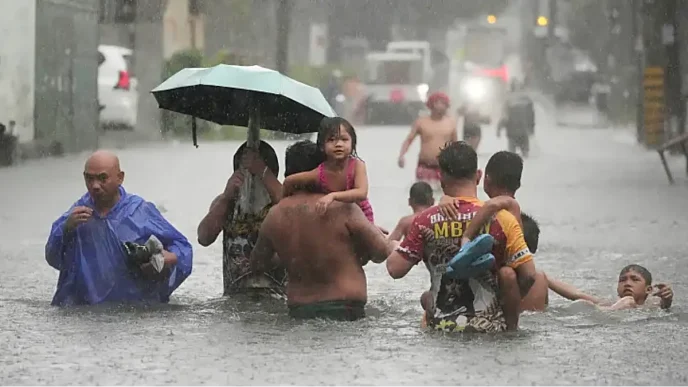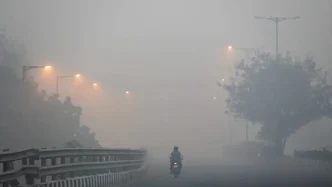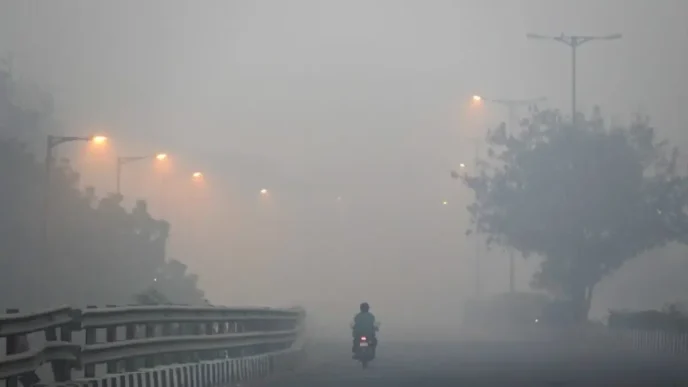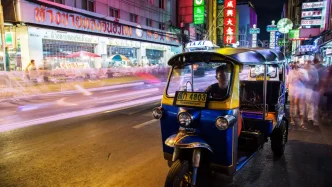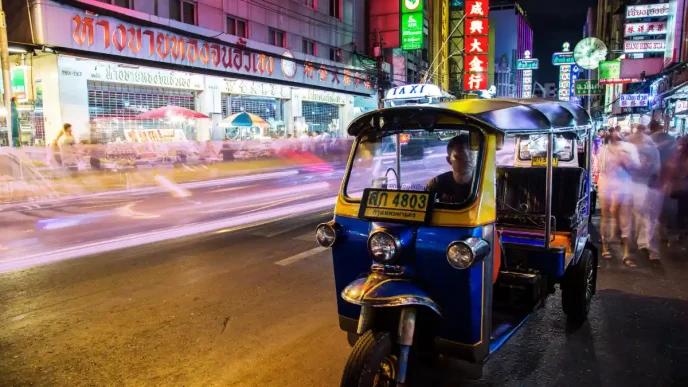In a devastating incident, a tourist boat carrying 49 people capsized in Vietnam’s iconic Ha Long Bay on July 19, 2025, leaving 35 confirmed dead, 10 survivors, and four still missing. As rescue operations persist under the looming threat of Typhoon Wipha, authorities in Quảng Ninh Province have mobilized an extensive search effort while providing support to grieving families. This tragedy has cast a shadow over one of Vietnam’s most celebrated UNESCO World Heritage sites, raising urgent questions about maritime safety in the face of unpredictable weather.
A Sudden Disaster in a Tourist Haven
Ha Long Bay, known for its emerald waters and towering limestone karsts, is a magnet for international and domestic tourists. On the afternoon of July 19, the Vịnh Xanh 58, a steel-hulled tourist boat with registration number QN 48-7105, set off at 12:55 p.m. for a sightseeing route between Sửng Sốt Cave and Ti Tốp Island. Owned by Đoàn Văn Trình from Hà An Ward in Quảng Ninh Province, the vessel carried 46 tourists and three crew members. Just 35 minutes into the journey, at 1:30 p.m., the boat encountered sudden stormy weather. By 2:05 p.m., it lost GPS signal, and shortly after, it capsized in the turbulent waters.
The exact cause of the capsizing remains under investigation, but initial reports point to extreme weather conditions. The National Centre for Hydro-Meteorological Forecasting described the event as part of a Mesoscale Convective System (MCS), a vast complex of thunderstorms spanning hundreds of kilometers. This system, exacerbated by a convergence zone and days of scorching temperatures, unleashed heavy downpours, lightning, strong gusts, and scattered whirlwinds across the region. While the circulation of Typhoon Wipha, the third typhoon to approach Vietnam’s East Sea (South China Sea) this year, had not yet directly impacted the Gulf of Tonkin, the unstable atmospheric conditions proved deadly.
A Massive Rescue Operation
In response to the disaster, Quảng Ninh Province launched an extensive search and rescue operation involving nearly 1,000 personnel and over 100 vessels. Forces from the Military Command, Border Guard, Police, Naval Region 1 Command, Coast Guard Region 1 Command, Fisheries Surveillance, Navy Special Forces, and the Hạ Long Bay Management Board worked alongside local fishermen to locate survivors and victims. By 2 a.m. on July 20, the wrecked Vịnh Xanh 58 was salvaged and towed ashore, a somber milestone in the grueling 15-hour operation.
Of the 49 individuals on board, authorities have accounted for 45. Ten survivors were rescued, while 35 have been confirmed deceased, with 31 of their identities verified. The four still missing—Hoàng Văn Thái (born 1985), Hoàng Việt Hùng (born 1979), Hoàng Thị Quyên (born 1975), and Nguyễn Duy Khải Phong (born 2019)—are the focus of an expanded search covering an additional 9 kilometers, divided into multiple units. Deputy Prime Minister Trần Hồng Hà, who has closely directed the efforts alongside senior officials from central ministries and Quảng Ninh Province, urged rescuers to locate all victims before Typhoon Wipha impacts the coastal areas.
The urgency of the situation is compounded by the approaching typhoon. In preparation, Quảng Ninh authorities have imposed a maritime suspension effective from July 20, halting all tourist boat operations in Ha Long Bay and suspending passenger transport vessels on island routes. This measure aims to ensure the safety of passengers, crew, and vessels as the region braces for further severe weather.
Community and Government Response
In the immediate aftermath, Quảng Ninh Province has stepped up to support the victims and their families. Financial assistance has been provided, with VNĐ25 million (~US$995) allocated per deceased individual for funeral expenses and VNĐ5 million (~US$199) for each injured survivor. The province is also covering accommodation and meal costs for relatives who have traveled to Quảng Ninh to identify loved ones or await news. Twenty-two hotels in Hạ Long have opened their doors, offering free rooms and meals to these families during this harrowing time.
By the morning of July 21, authorities had completed the necessary procedures to hand over the bodies of 30 deceased victims to their families. Quảng Ninh provided additional financial aid and transport support to help families return their loved ones to their hometowns for burial. The grief of those waiting for news of the missing is palpable, as tearful relatives gather in Ha Long, hoping for closure amidst the ongoing rescue efforts.
Broader Implications for Tourism Safety
This tragedy in Ha Long Bay, a cornerstone of Vietnam’s tourism industry, underscores the vulnerabilities of maritime travel in a region prone to sudden and severe weather changes. While Ha Long Bay attracts millions of visitors annually with its breathtaking scenery, the incident raises critical questions about safety protocols for tourist vessels. The Vịnh Xanh 58, built in 2015, was presumably equipped for standard operations, yet it succumbed to the ferocity of the storm. As investigations proceed, authorities will likely scrutinize whether adequate weather warnings were issued, if the boat was overloaded or improperly maintained, and whether crew training was sufficient to handle such emergencies.
Vietnam’s tourism sector, a significant driver of economic growth, relies heavily on the allure of destinations like Ha Long Bay. However, incidents like this can erode traveler confidence if safety concerns are not addressed transparently. The maritime suspension, while necessary for immediate safety, may also disrupt local businesses dependent on tourism, from boat operators to hospitality providers. Balancing economic needs with stringent safety measures will be a delicate task for Quảng Ninh officials in the coming weeks.
Moreover, the timing of the disaster—coinciding with the approach of Typhoon Wipha—highlights the broader challenges of climate variability in Southeast Asia. The region frequently faces extreme weather events, from typhoons to flash floods, which can strike with little warning. The National Centre for Hydro-Meteorological Forecasting’s classification of the storm as an MCS points to the complexity of predicting such systems, which can form rapidly and wreak havoc over vast areas. For coastal communities and tourist hubs, investing in advanced weather monitoring and early warning systems could be a lifesaving priority.
Human Stories Amid the Tragedy
Beyond the statistics and operational details, the capsizing of the Vịnh Xanh 58 is a deeply human tragedy. Among the missing is Nguyễn Duy Khải Phong, a child born in 2019, whose family clings to hope as rescue teams comb the waters. The loss of 35 lives, many of whom were likely on a once-in-a-lifetime trip to Ha Long Bay, has left a void in communities across Vietnam and possibly beyond, as the nationalities of all victims have yet to be fully disclosed. The survivors, too, bear the weight of trauma, having endured a harrowing ordeal in the stormy seas.
The solidarity shown by local authorities, businesses, and fishermen in Quảng Ninh offers a glimmer of hope amid the sorrow. The fishermen, in particular, have played a vital role in the search efforts, leveraging their intimate knowledge of the bay’s waters to assist professional rescue teams. Their involvement speaks to the tight-knit nature of coastal communities, where mutual support in times of crisis is a way of life.
Looking Ahead: A Race Against Nature
As the search for the four missing individuals continues, the shadow of Typhoon Wipha looms large. Deputy Prime Minister Trần Hồng Hà’s call for an all-out effort reflects the urgency of finding closure for the families before conditions worsen. The expanded search radius and deployment of flycams demonstrate the determination to leave no stone unturned, even as the region prepares for another bout of destructive weather.
This incident serves as a stark reminder of nature’s unpredictability and the importance of preparedness in safeguarding lives. For Vietnam, a country with a vast coastline and a thriving tourism industry, the lessons from Ha Long Bay could shape policies on maritime safety and disaster response for years to come. As rescue teams battle time and the elements, the nation mourns the lives lost and holds its breath for those still unaccounted for.

